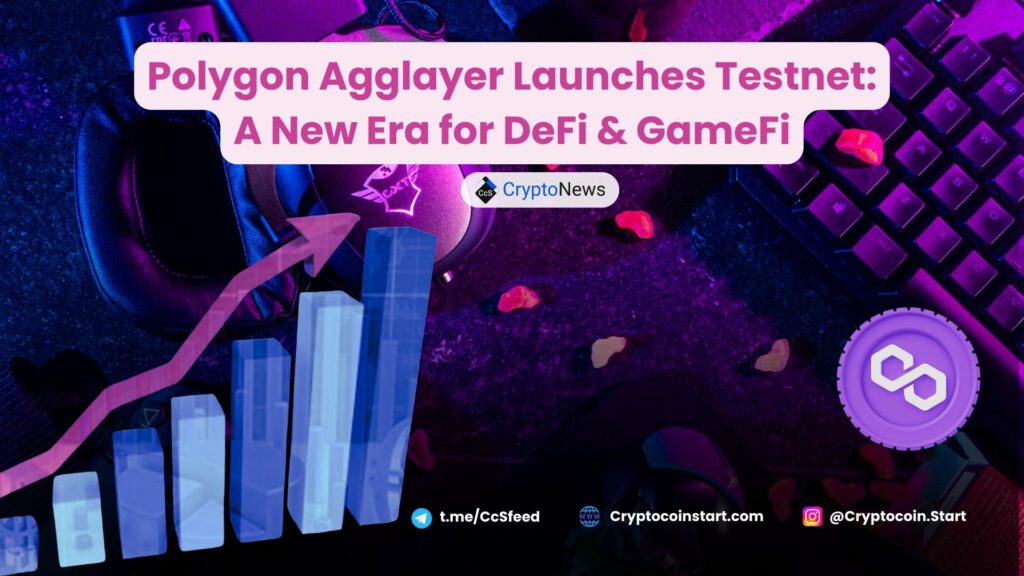
The Role of Pessimistic Proofs in Agglayer’s Testnet
Agglayer’s testnet v0.2 introduces a novel approach known as pessimistic proofs. This new security feature is designed to enhance the reliability and safety of cross-chain communications by ensuring the secure and verifiable transfer of values across different blockchain networks.
Polygon co-founder Sandeep Nailwal emphasized that the integration of pessimistic proofs in Agglayer’s testnet is a significant step towards creating a seamless and secure framework for blockchain transactions. These proofs play a crucial role in mitigating risks associated with cross-chain operations, offering improved security and efficiency as multiple blockchains interact within the ecosystem.
What is Agglayer?
Agglayer is a modular cross-blockchain platform designed to bridge the gaps between various blockchain ecosystems, especially those based on Ethereum Virtual Machine (EVM) protocols. The platform aims to tackle the issue of liquidity fragmentation in decentralized finance (DeFi) and other sectors reliant on blockchain technology.
Key Features of Agglayer:
- Seamless cross-chain interoperability
- Use of pessimistic proofs for enhanced security
- POL token replacing MATIC as the primary gas currency
- Focus on reducing liquidity fragmentation in DeFi
The POL Token and Its Role in Agglayer
One of the key features of Agglayer is the introduction of the POL token. POL will supersede MATIC as the primary gas currency within the Polygon ecosystem, supporting transactions and smart contract executions across the platform. This strategic shift is part of Agglayer’s broader vision to create a more integrated and efficient blockchain environment.
By replacing MATIC with POL, Agglayer aims to streamline blockchain operations, making it easier for developers and users to interact with the ecosystem. This change signals a significant move toward enhancing scalability and improving the user experience within the decentralized space.
Agglayer’s Vision for Blockchain Collaboration
Agglayer is not only focused on Polygon but also aims to foster collaborations with other major blockchain networks. Discussions are already underway regarding potential partnerships with Solana (SOL), a significant player in the blockchain space. These collaborations aim to create synergies that enhance the scalability and functionality of decentralized applications (dApps) across various blockchain ecosystems.
Potential Collaborations Include:
- Partnerships with Solana to expand cross-blockchain interactions
- Integration with other prominent blockchain networks for enhanced dApp scalability
- Improved interoperability between different blockchain ecosystems
Agglayer’s Impact on Key Sectors
Agglayer is positioned to impact several key sectors within the blockchain space, including gaming, decentralized finance (DeFi), and real-world assets (RWAs). The platform’s ability to support seamless and cost-effective interactions across different blockchain networks is particularly beneficial for GameFi, offering dynamic and scalable gaming experiences.
Additionally, Agglayer’s architecture is well-suited to support data-driven applications, paving the way for improved interactions within AI and decentralized personal information networks (DePIN). These sectors stand to benefit from the enhanced interoperability and efficiency that Agglayer brings to the blockchain ecosystem.
Polygon’s Current Performance: MATIC Price Update
Despite the promising developments surrounding Agglayer, Polygon’s native token, MATIC, has faced challenges in the broader market. Currently, MATIC is priced at $0.4740, reflecting a 5.03% decline in the last 24 hours. Over the past week, MATIC has experienced a 23.85% drop, indicating broader market pressures. However, the token has seen a 9.72% increase in the last month, suggesting some recovery.
The year-to-date performance of MATIC remains in negative territory, with a 51.24% decline, highlighting the challenges faced by Polygon in 2024. MATIC’s market capitalization is approximately $905.41 million, with a 24-hour trading volume of $5.23 million. Despite this, MATIC remains significantly below its all-time high of $2.9249, reflecting the bearish market sentiment.
Conclusion: Agglayer’s Potential to Revolutionize Blockchain Interoperability
As Agglayer prepares for its mainnet launch in early 2025, the platform is poised to revolutionize blockchain interoperability. With the integration of pessimistic proofs, the introduction of POL as the primary gas currency, and a focus on enhancing cross-blockchain communication, Agglayer promises to reshape the future of decentralized applications and smart contract execution.
Polygon’s transition to Agglayer, along with potential collaborations with other blockchain networks, signals a new era of blockchain interoperability and scalability. As Agglayer moves toward its full launch, the blockchain community eagerly anticipates the platform’s impact on the broader digital ecosystem.

